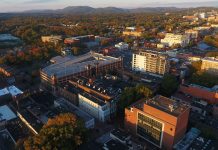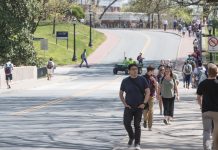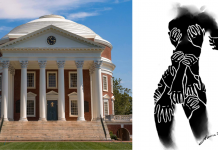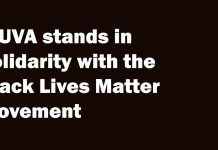Amongst the events of UVa’s Bicentennial Commemoration was the reiterated announcement of a new monument coming to Grounds: the “Memorial to Enslaved Laborers.”
The memorial will be comprised of a granite “Freedom Ring,” a large circular structure that is set to be erected in a field of grass across from The Corner and east of Brooks Hall. The memorial will display the names of enslaved people who had an impact on the University by working and maintaining the Grounds.
President Sullivan laid the foundation for the memorial’s creation when she appointed a “Commission on Slavery and the University” as a way to recognize UVa’s history of slavery in 2013. However, since it has been four years since the development of this commission, I feel that it is important to note the changing context of slavery at UVa from 2013 to today.
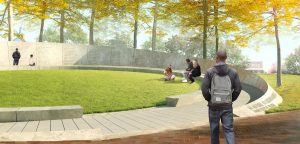
First of all, it is vital that we understand that statues and memorials mean different things to different people. They are never just an assembly of objective facts or figures; they carry implications. Today, many believe that slavery is a large, ugly stain on the fabric of our country’s history. But we take for granted that this way of thinking is the way that all Americans perceive slavery – many still do not accept the repercussions of that dark time.
The legacy of slavery still impacts race relations, even today. One hundred fifty-two years after the Emancipation Proclamation and close to fifty years after the Civil Rights movement, slavery is still actively shaping the thought processes, social structures, economy, and politics of the United States. Even our media tend to perpetuate ideas of black inferiority in ways so minor that it slips by, with no one realizing the negative connotations associated with the words and actions of news reporters.
Sure, the country has made notable progress in at least noting the use of racist ideologies in everyday life. But this does not mean that these ideas will disappear anytime soon. (It is worth looking at Charlottesville as a heartbreaking example of these ideas making a resurgence this past year.)
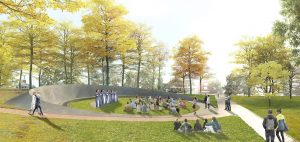
All of this being said, what difference will a memorial really make? In the grand scheme of things, it will probably just be another shapely piece of stone that people walk past and admire for its architectural beauty; with no recognition of its deeper intended purpose.
However, to University students and members of the Charlottesville community, this statue has the potential to be a step forward, especially after the tumultuous events in August that placed Charlottesville on the national stage for race conversations. Recognition of the oppressed may be a small step to identifying the array of social issues in this country, but it’s a step forward nonetheless.
The memorial also lends itself to more controversy. For those who support the preservation of the statues of Robert E. Lee and have openly protested their removal, this memorial may become a bone of contention; having a slave memorial in the same town as Confederate statues seems contradictory. Nonetheless, it could be viewed as a representation of the opposing viewpoints that define the democracy that is America. It can also be seen as a way to recognize history on both sides.
Personally, I appreciate the University’s effort to broaden its recognition of its own history. We can’t erase slavery and ignoring it won’t lessen it’s effects. I hope the creation of the Memorial to Enslaved Laborers will allow all people, no matter their race, to see that the place we walk through everyday is more than just beautifully laid buildings and cleanly cut grass. Grounds is the product of someone else’s hard work, hard work that resulted in the creation of a place that these enslaved laborers would never be able to enjoy themselves. It is our duty now, as students and citizens, to make the most of what they couldn’t.
So this memorial is not solely about slavery; it is about informing people of what has come before us and what is to come in the future. As George Washington Carver so eloquently put it, education “is the key to unlock the golden door of freedom.” And, hopefully, this memorial will do just that.
To find out more about the memorial visit: https://news.virginia.edu/content/exhibit-memorial-enslaved-laborers-display-friday







